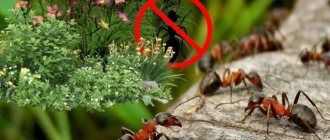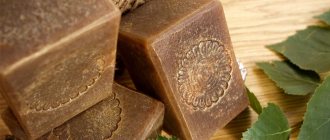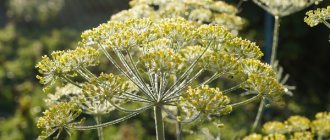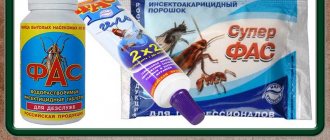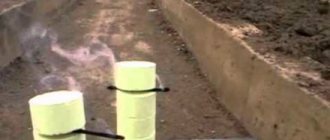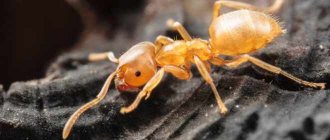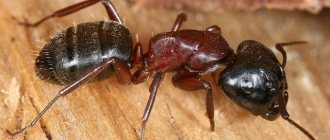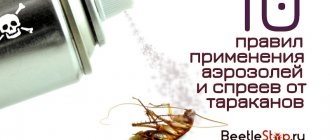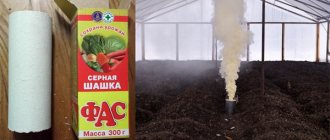The true reason for the antipathy of ants to millet is unknown, but the method of fighting ants with the help of millet is quite popular. There are several ways to use this cereal to expel forest and garden ants from your plot of land. In addition, millet can also be used against house ants.
It is not known for certain why ants are afraid of millet, but the fact remains: if you cover their paths and anthills with this grain, the number of ants in the area will sharply decrease. You can destroy ants using millet in an apartment, only the method of use in this case will be slightly different.
Millet is a grain made from millet, a valuable nutritious grain. But all types of ants - forest, garden, domestic - do not like it. Several versions have been put forward to explain this:
- In shape and size, millet grains are similar to ant eggs. So the ants take it for their dead eggs. The abundance of dead eggs frightens them and forces them to find a more suitable place to build an anthill, where the larvae would not die at the stage of development in the egg.
- The second version is partly similar to the first: the ants mistake the grains for eggs, so they take them to the anthill. After the first rain, the cereal swells, closing all exits and entrances, which leads to the death of the queen (queen) and most of the working individuals.
- The smell of wheat is unpleasant or is associated with something threatening for insects. Whether this is true or not, where millet was scattered, the ants soon disappear. Although they may appear again after some time. Perhaps they are simply clearing their territory of millet.
- Millet scattered on the surface of an anthill gets inside without the participation of ants. The streamlined shape of the grains facilitates its unhindered rolling inside the anthill along all entrances. Eventually, the grain completely fills the inner chambers of the nesting chamber, where the larvae and the queen (the queen who lays eggs) are located. It is impossible for insects to remove all the grains from the anthill, and it is also impossible to get out of the anthill, so the bulk of the ants die, and the survivors leave.
- Millet is used as food for ants and the queen, and when the grain swells in the stomach, the insects die.
- Millet attracts small birds to the garden, which willingly peck the grains along with insects. Ants have a protective coloring, and the bright grain is clearly visible to birds. Probably, in this way the millet “tells” the birds the location of the ants.
- The grain kernels end up in the lower layers of the anthill, where it is constantly damp and dark. In such conditions, soil fungi begin to quickly develop on the cereal, which pose a danger to ant larvae. The larvae begin to die, and the ants, in panic, leave the unsuitable place, going in search of a new one.
There have been no scientific studies on the effects of millet on ants. However, the cereal poured onto the nest or next to it soon disappeared, and with it the ants. It also happened that the ants disappeared only for a while, but after several days they appeared again.
The method of using millet is completely safe for plants, soil, animals and humans. The kernels of this cereal contain only useful substances - it is all the more surprising that millet can cause so much trouble for ants.
How to use it correctly?
The fight against these small pests can be carried out using different technologies. However, when the choice is made in favor of millet against ants in the garden, you need to know how to use it correctly. For this purpose, 2 options are recommended: dry or soaked grain. Other additives are also required. Insects are very fond of sweets; in order to lure them to the poison, the product must be given a sweet taste. The following products are used as such:
- honey;
- sugar;
- jam.
With powdered sugar
For this bait, you can use raw millet grains. The recipe is as follows:
- Mix 0.5 kg of the main raw material with 100 g of powdered sugar;
- scatter the mixture closer to the ants' nest;
- If possible, it is advisable to cover the parasites’ home itself with sweet cereal.
The amount of millet is calculated depending on the size of the ant family. If you need to destroy a large nest, up to 2 kg of cereal is needed; for a medium-sized family, 0.5 kg will be enough.
With honey or jam
You can also get rid of these small insects in your summer cottage using a mixture containing honey or jam. To work, you will need soaked millet, which must first be soaked for about 15 minutes in warm water. Sweet ingredients (jam, honey) should be added to this liquid. Place bait on ant paths, as well as near their habitat.
Although both of the above methods can effectively remove ants from the site, they are not without their disadvantages. The only disadvantage of these options is their fragility, since after some time the ants are again able to return to their familiar place. Then the treatment of the area will have to be repeated, using additionally other repellents.
Important! You can plant tomatoes, mint or lemon balm near the ant nest. Insects do not like these plants, so they will leave the anthill.
When hunting a queen ant
Some gardeners explain that ants are afraid of millet because the nest passages are blocked. Insects, confident that the grain particles are their eggs, immediately move them inside the colony. It's humid there, the millet swells and blocks access to the uterus. The female dies of hunger, and the insect colony disintegrates.
Millet from ants. Why are ants afraid of millet
Many people know that ants are persistent and hardworking insects, but when these qualities turn against the citizens themselves, it is not pleasant. Small pests, settling in apartments and gardens, completely undermine the calm and measured life of the owners, and a feverish search begins for the best and most suitable remedy for ants. It is then that a method of fighting ants with simple millet comes to mind.
Millet is the peeled fruits of cultivated millet species. This cereal is widely used as food, as it contains many microelements, complex carbohydrates, vitamins, and is therefore very useful for children and adults. Then it is not clear how millet helps against ants and whether it is effective.
The effectiveness of millet to combat ants
Any remedy against ants must take into account the peculiarities of the organization of life in the anthill and the method of reproduction. If you kill only the workers, of which only ten percent leave the nest, the problem will not be solved. The root of evil lies deep inside the colony and is carefully guarded. The most effective method to destroy a colony is to kill the queen.
There have been no studies on the topic “does millet help against ants?” Some believe that insects mistake grains of millet for the eggs of their queen and bring them to the anthill. After the next rain, it is natural that the millet swells and closes all the passages in the nest, making life in it unbearable. Others believe that the millet is eaten by ants and the queen and after that, under the influence of intestinal enzymes, it swells to such a size that the individual simply bursts like a balloon. In any case, it is not entirely clear why ants are afraid of millet.
Recipes and instructions for using millet against ants
Millet against ants has been used for quite a long time and each owner has his own super-effective recipe. Most often, this cereal is used raw. It simply fills up the anthill, the place of dislocation or frequent appearance of ants. Of course, it is easiest to do this on a personal plot than in an apartment, since it is unlikely that an individual will want to try ordinary millet instead of the usual and available diet.
In order to make cereal more attractive in the eyes of ants, you can try the following recipes.
- 500 gr. millet needs to be mixed with 100 gr. powdered sugar. The sweet smell will attract the individual and make it share its find with its brethren and the queen.
- It is best to pour the mixture as close to or onto the anthill as possible. In apartment conditions, you can drip a little honey next to the bait or on it.
- To speed up the action of the product, millet can be pre-soaked in warm water for literally 10-15 minutes.
- Add sugar, honey or jam to this water to make it very sweet. Sweet millet will greatly increase the interest of the ants and will definitely reach the queen.
- It should be placed in the corners of the room, under the baseboards, near the trash can.
About the effectiveness of the method
The principle of the effect of millet on insects is not entirely clear. The lack of a specific aroma in the grains does not clarify the situation at all, which is why insects do not like millet so much. The reasoning on this topic also varies greatly.
When using any remedy against pests, you need to take into account their lifestyle, the nuances of reproduction, and rules of behavior. Only working individuals are visible to humans in search of food, and the queen, who is responsible for the continuation of her kind, almost never leaves the anthill. Because of this, destroying the workers will not solve the problem at all. To get rid of pests in the garden, it is the uterus that is required to be limed. But how does millet save in such a situation, which is why the ants are afraid of it, because the grains have absolutely no specific aroma? Let’s consider the question in more detail.
The effectiveness of the method, according to some statements, is due to the fact that when insects bring millet into their home, a certain amount of the product remains in the lower part of the anthill, where there is always high humidity. Because of this, fungi begin to parasitize the cereal, which is dangerous for these insects. This leads to the fact that the ants leave their home in the country.
Some gardeners who have used millet as a method of fighting ants are convinced that the method is not a panacea, since it does not help to reliably eliminate harmful insects. Its use can only reduce the size of the colony. Although this is quite enough, since a small number of insects benefits the garden plot.
Some gardeners are not happy with the results of using millet, since insects migrate from one place to another area that is free from this bait. Repeated measures are required for the durability of the procedure, because:
- oviposition is not destroyed;
- the territory is replenished with insects living in neighboring areas.
For prevention purposes, gardeners recommend sprinkling millet on all paths, row spacing, and tree trunks. Alternative home remedies can also help repel pests.
Advantages of using millet in summer cottages
This is the best option for people who do not use pesticides. The cost of cereal is low and affordable for any buyer. Also a strong argument is the environmental friendliness and safety of grains in relation to green spaces and soil. Fruit trees, berry bushes, roses, and ant nests are treated with millet.
Millet on the site.
Effect of millet cereal on ants
The exact reason for insects’ hostility to millet is still not known. Millet does not have a pronounced aroma and does not poison them. The main versions are:
- erroneous perception of millet instead of eggs and its transportation to nests. Due to exposure to moisture, the grains swell and the passages become clogged. This is fraught with hunger and death for the uterus;
- contact of fungi with millet grains and further adhesion. Ants cannot tolerate the smell of fungi and leave the home;
- swelling of the grain in the ant’s stomach, which causes death;
- they simply scatter temporarily, carrying away a large number of small crumbs from their area;
- the grains are small, their shape is streamlined, and they roll up easily;
- attracting natural enemies - birds. They feed on ants.
Alternative methods
Other products can also be used in the fight against ants. Semolina, sunflower oil, black pepper, coffee grounds, some vegetables, and medicinal plants can help solve this problem.
Semolina
Semolina is an affordable and effective pest control product. It can be used in dry form, scatter the cereal in the area where pests accumulate. It is recommended to sprinkle cereal on trails and nests. This method can be used both in greenhouses and in open ground.
Also, small grains are used to prepare a sweet delicacy based on semolina and powdered sugar or honey. For the recipe you will need to mix 300 g of semolina and 100 g of crushed sugar. Pests will never refuse to enjoy such a dessert. Carbohydrate foods are vital for them. Semolina saturated with powdered sugar will also please the queen, since the working individuals deliver the most exquisite delicacies to the anthill.
Interesting! When insects consume such food, paralysis occurs due to swelling of the substance in the stomach. Semolina puts pressure on organs and causes death. To cause intestinal problems in insects, you can add yeast or soda mixed with powdered sugar to the semolina.
Sunflower oil
Unrefined sunflower oil, garlic and lemon have a repellent effect on small pests due to their pungent odor. Slices of vegetables and fruits are placed in areas where pests are located. Ant trails are treated with oil.
Black or red pepper
These spices are often used in the fight against ants because of their unpleasant smell and taste. If it accidentally enters the digestive system, severe irritation occurs, which causes the death of the pest. The unpleasant smell of pepper is an excellent tool for scaring away unexpected guests from the area.
Coffee grounds
Some gardeners suggest using coffee grounds as a folk remedy. With its help you can protect fruit trees, vegetable gardens, and flower beds. Well-dried grounds should be scattered in places where insects accumulate, thereby preventing the appearance of small pests there.
Attention! The above-mentioned method of fighting ants does not get rid of ants forever, however, after about a month after treatment, not a single ant will appear in the garden plot.
Reviews
Millet from ants
The opinion of summer residents regarding this method is in most cases positive. Since many were able to get rid of insects forever and protect the crop. Here are some reviews about millet from those who have already appreciated the effectiveness of the method.
I knew about the existence of this method for a long time, but somehow I never had to use it. But last summer, these annoying insects literally filled the summer cottage. I tried adding millet. I sprinkled it and went home, when I returned 3 days later, the pests still dominated my garden. The neighbor suggested that birds could have eaten the millet and the ants got nothing. Therefore, the next time I placed several scarecrows around the garden and again used the well-known method. After just 2 days I was able to get rid of the unwanted neighborhood.
Olga Maksimovna, Uglich
I have been using millet against ants in my dacha for a long time. My grandmother told me this method. I always scatter the grains as soon as I find ants in the area. After a few days the problem disappears.
Irina Stepanovna, Lipetsk
Personally, I think using millet against ants is the best option. It is inexpensive, easy to use and does not require poisoning the native soil with any chemicals. We rarely have ants in our garden beds, but if necessary, we use only this method.
Andrey, Zadonsk
The method of getting rid of ants using millet can be considered the safest and quite effective. In advanced cases, it is recommended to use it in combination with other folk remedies.
LiveInternetLiveInternet
—Tags
—Categories
- sweet life (3181)
- knitting (3099)
- to the delight of meat eaters (2702)
- sore point (2381)
- amazing baked goods (2161)
- I will be better. (2002)
- let's have a bite (1906)
- hit the vegetables (1443)
- cellar (1285)
- tips for life (1155)
- not a day without salad (1015)
- unusual dessert (756)
- fish day (719)
- whether in the garden or in the vegetable garden. (708)
- poetry of colors (656)
- sewing and cutting (485)
- holiday (464)
- alluring world of flowers (423)
- I will lose weight 100% (412)
- what's first? (363)
- the pain of the soul flowed onto the paper (337)
- handmade (304)
- music inside us (297)
- interesting story (275)
- wine cellar (252)
- please speak (236)
- interior (156)
- we fast tasty, satisfyingly, with pleasure (151)
- PunchMorsCocktail (145)
- books, films (125)
- like an echo of days long gone (photo) (113)
- pizzeria at home (105)
- bread is the head of everything (96)
- tea break (74)
- a thought appeared (73)
- coffee aromas (73)
- cooking from. from appetizer to dessert (57)
- We teach ourselves (32)
- in palms - crumbs (17)
- computer help (4)
—Search by diary
—Subscription by e-mail
-Statistics
Tips and tricks
Millet cereal against ants is an excellent remedy, but you should approach the problem in a comprehensive manner. It is advisable to include other substances to help:
- vinegar;
- boric acid;
- nicotine water;
- cinnamon;
- lemon juice;
- kerosene;
- mustard powder.
Important! The effectiveness of any of the chosen methods depends on various factors.
To achieve maximum results, the following parameters should be taken into account:
- type of product used;
- air temperature;
- humidity indicator;
- amount of precipitation.
To get high productivity from the product, you need to use several options for killing ants in the garden . It is also recommended to use millet cereal as a poison in a country house or city apartment. The technology of use is similar. However, in the home it is necessary to protect access to the product for children and pets.
Millet is the peeled fruit of millet. This cereal is actively used as food because it contains many vitamins, microelements, and complex carbohydrates. Raw millet often spoils and becomes a breeding ground for pathogenic bacteria. For this reason, it is important to promptly update baits, destroying old cereals.
Millet and other cereals used in summer cottages are absolutely harmless to the environment and living beings.
However, experts recommend combining them with other gentle chemicals, such as Ant. The advantage of such bait is that the worker ants bring it to the queen and larvae. Such an event will completely get rid of insects.
